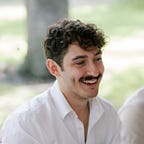Freedom Not Freeways
Why Expanding Highways is Outdated, Redundant, and Wrong
I grew up in a very protected suburb. From an early age, I could get around independently on a bike without my parents overlooking it. The freedom afforded to me as a young 8-year-old, to play football with friends or visit the creeks behind our homes, has followed me everywhere I’ve lived since. This freedom was not granted by my mom (although she gave me permission), but from the availability of diverse mobility options. If my friends were down the street at the nearby park, I’d walk; If they were at the soccer fields across town, I’d bike; If I was playing in a tournament a few suburbs over, I’d drive (once 16). In almost every situation, there was a comfortable, unique way to commute, and oh, how much richer was my childhood for it! While I would consider my suburb a car haven, at least I could choose how to get around as a kid. This is not always the case in cities across the U.S. For so long, we’ve dedicated the vast majority of our resources to highway development, and so little to protected bike lanes, Bus Rapid Transit, or even just sidewalks. By only ever prioritizing car infrastructure, we are destined to see more traffic and pollution. This is not an essay against the car though, but rather a condemnation of cities that force us to rely 100% on the car.
When I grew up and left my suburb, I tried to maintain that freedom everywhere I went; Austin, TX, Granada, Spain, Chicago, and Milan alike. While some cities supported mobility freedom more than others, each one provided an environment of inclusivity. I never brought a car with me when I moved, so getting around each city on foot was crucial. I came to realize that this diversity of mobility was not a God-given gift to cities, but an intentional investment in sustainable, clean infrastructure. Amsterdam was a car-filled city like any other as early as the 1970s, but with conviction and vision, they were able to transform themselves into a biker’s paradise. The benefits from these investments continue to pay dividends.
Pedestrian deaths in the Netherlands went from 430 per million in 1970 to 23 per million in 2019. The U.S. on the other hand has gone from 600 pedestrian deaths per million in 1970 to… 686 per million. We’ve gotten worse?! As someone who has lived extensively in both worlds — Houston and Amsterdam — it’s not hard to understand why. While Houston has continued to push highway expansions and new builds, the Dutch took a different route and dramatically cut their pedestrian deaths by an incredible amount. It seems TXDOT’s priority is not individual health and well-being, but rather a need to further expand the ugly tentacles of urban freeways.
Now in 2023, after we’ve made breakthroughs in Fusion technology, and ChatGPT can code in Python, we still insist on building out the same old highways. We promote these city-destroying projects, ignoring the potential of urban communities for the promise of shorter commutes. While our federal and state departments haven’t learned, we renegade walking the streets and biking the paths to realize the damage we inflict when we develop only one form of transit. Imagine if Texas grocery stores mandated tomorrow that they would only ever provide potatoes to their customers. While potatoes are fine and dandy, it’s not enough to just eat that for every meal. Now if we look at TxDOT (Texas Department of Transportation), they’ve only really provided highway expansions since the 1950s! We Texans want the freedom to choose how we commute every day, and surely we don’t want to drive for every single trip. There are more options than just highways, and it can be seen all over the world; from New York to Singapore, Mexico City to Madrid. It’s as simple as looking at Amsterdam to understand how a car-infested city went from a dangerous and polluted space to a safe and lively one. Or how Seoul removed their downtown interstate highway in exchange for children’s laughter and clean air. Or how Paris updated the Seine riverfront in 2018 to remove all cars and permanently hand over the beautiful waterway to pedestrians full time. In all these cases, the city governments realized what incredible natural amenities the city had, and they acted to provide diverse transit options in and around them, maximizing city space, instead of squandering it.
The answer to how we can assure this clean, multi-modal future is not an easy one. It requires bold action from policymakers and long-term thinking in how we envision our cities instead of cheap fixes to abate congestion. Our goal should always be to move people, not cars, and the more we pour investments down the highway drain, the longer our community members have to wait for decent transit options. Again, this is not a call to ban cars or remove all highways. This is just a cry for help that Houston, and cities across the U.S., provide alternatives to driving in every sense of the idea; buses, bikes, trams, and trains. We have to question the value of $10B highway expansions and ask ourselves if that is the best use of our funds today. Similarly, we need to look at our city transit options as a financial portfolio, and diversification is crucial for avoiding injuries, reducing traffic, and supporting families. As a kid, I could access sidewalks and biking paths at will, and as an adult, I demand we provide that for future generations in downtown cores all over the U.S.
If you’re interested in a cleaner more sustainable transit future, I recommend donating/volunteering with local organizations in your community! Fighting freeways is an uphill battle, but we’ve seen globally that if citizens raise their voices, we can implement change right in our own backyard.
